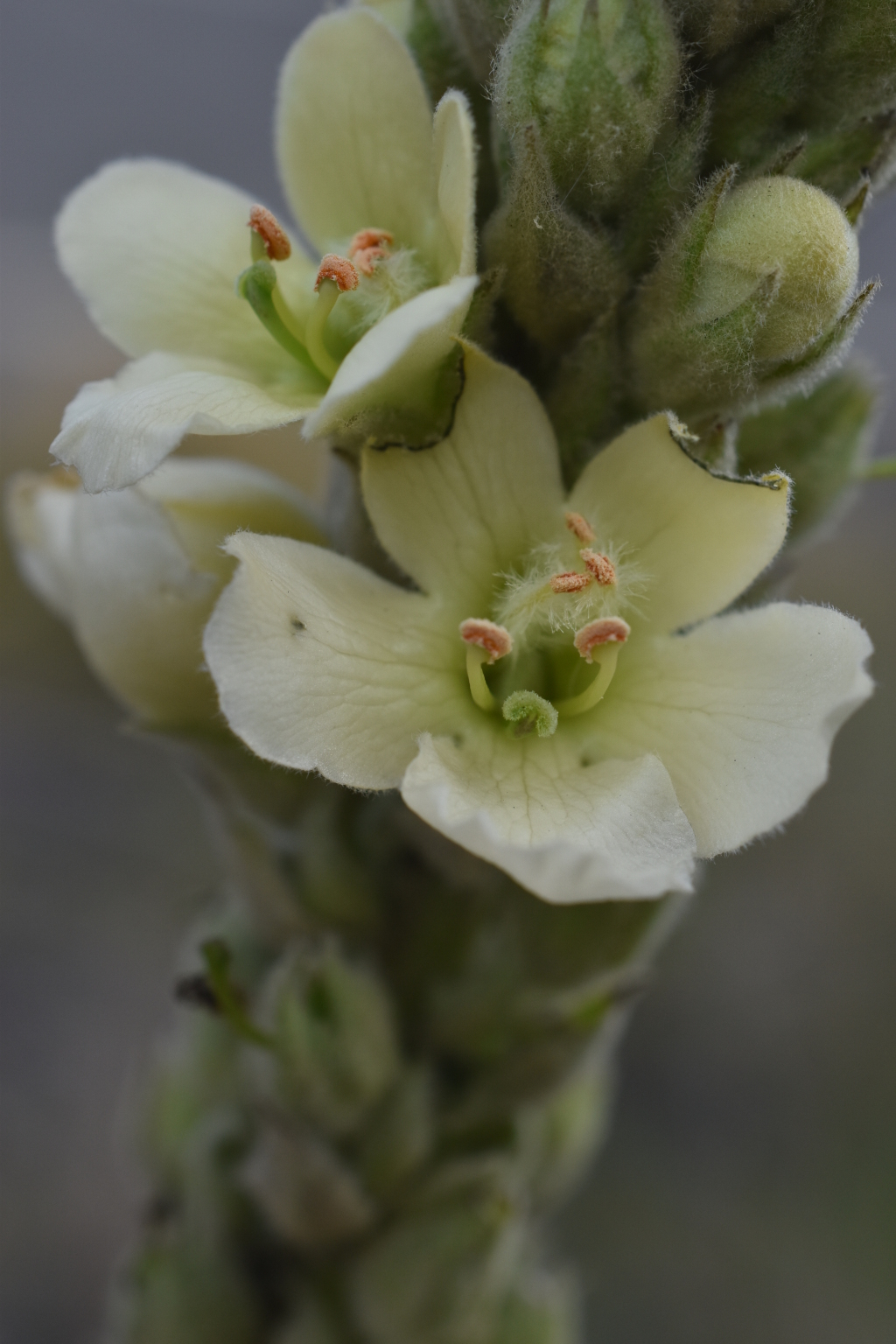Verbascum thapsus subsp. thapsus
Aarons RodErect biennial 0.5–2 m high, greyish- or whitish-tomentose with dense stellate eglandular hairs. Lower leaves with lamina obovate to elliptic, 8–50 cm long, 2.5–14 cm wide, margins entire or crenate, base tapering into short petiole; upper leaves sessile and decurrent on stem. Racemes simple or branched, dense, 15–100 cm long; 2–7 flowers in each bract axil; bracts 12–18 mm long; pedicels 1–5 mm long; bracteoles 2. Sepals 6–12 mm long; corolla 1.5–3 cm diam., pale yellow-ivory or yellow, pubescent outside with numerous glandular dots; stamens 5, unequal, 10–15 mm long, lowest pair of filaments glabrous except somewhat villous near middle, upper 3 villous, hairs colourless, anthers reniform, decurrent or obliquely inserted. Capsule broad-ovoid, 7–10 mm long, tomentose. Flowers Nov.–Mar.
VVP, VRiv, MuF, GipP, OtP, WaP, Gold, CVU, DunT, NIS, EGL, EGU, HSF, HNF, OtR, Strz, MonT, VAlp. Naturalised in all States except NT. Native to Europe and Asia. Locally common on roadsides, in neglected pasture, margins of watercourses etc., particularly on shallow soils overlying rock and soils derived from limestone, mostly in relatively low-rainfall areas.
In all Australian material examined the lowest pair of anther filaments are glabrous except for a villous area in the middle. This feature is diagnostic for subsp. thapsus.
Barker, W.R.; Harden, G.J. (1999). Verbascum. In: Walsh, N.G.; Entwisle, T.J., Flora of Victoria Vol. 4, Cornaceae to Asteraceae, pp. 498–500. Inkata Press, Melbourne.
 Spinning
Spinning

